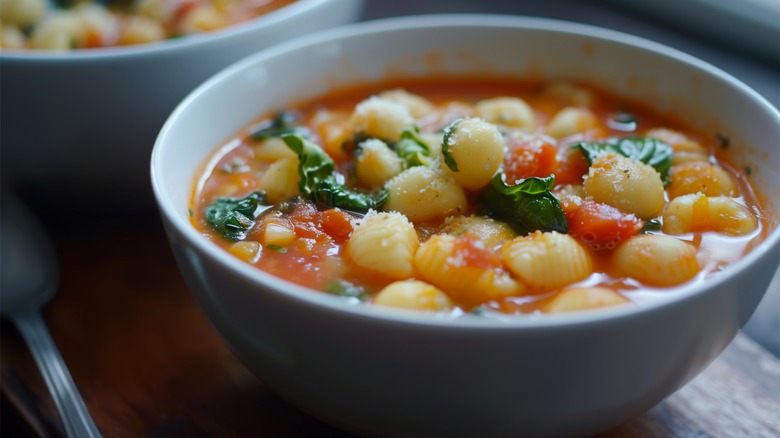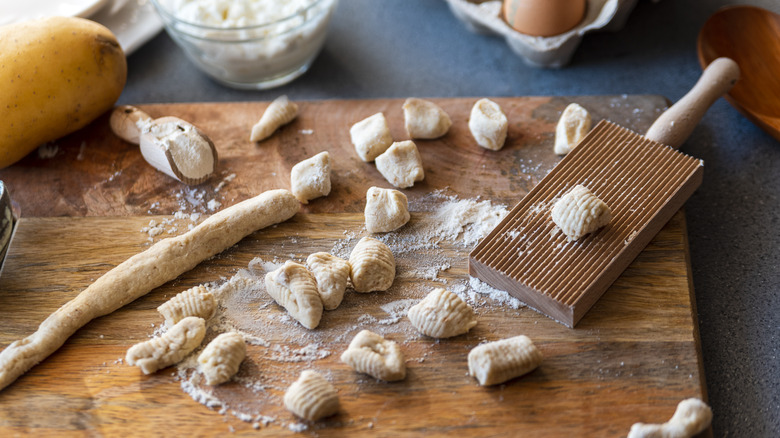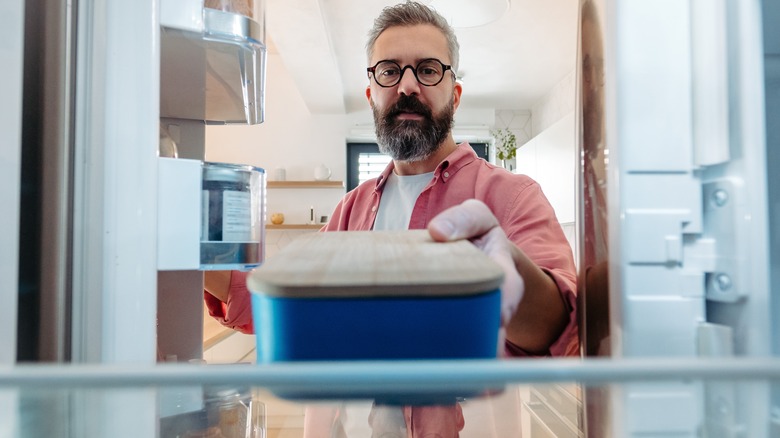When To Add Gnocchi To Your Soup To Avoid A Mushy Mess
Fashioning soup with noodles is an easy way to fill it out and add some satisfying starches to the pot. Although ramen and chicken noodle soup are some faultless examples of brothy, spoonable, pasta-infused dishes, gnocchi soup deserves a spot in your meal rotation just as much as the others. Pleasantly chewy with a bit of give for the perfect mouthfeel, this potato pasta is a creative invention in and of itself, and introducing it to soup adds to its inventiveness. Delicious as it may be, the gnocchi soup-making order of operations is essential.
If you add gnocchi to a simmering pot of soup too early on in the cooking process, you risk mouthfuls of pasta that are water-logged, wilted, and soggy. When it's over-boiled, the molecular foundation of gnocchi disintegrates, compromising its structural integrity. To ensure that you have perfectly textured pasta noodle nuggets gracing your favorite soup recipes, always add gnocchi at the very end of the cooking process. If you're slow-cooking gnocchi soup, the same rule applies, but you'll want to incorporate the pasta during the last hour, as it will take longer to cook through.
Gnocchi can take anywhere from one to five minutes to cook, but if you're not sure if it's ready, there's an easy way to tell. When you drop the pasta dumplings into a pot of soup, they will first sink to the bottom. Once they are done cooking, they float to the top of the soup — et voilà! Time to enjoy.
The importance of gnocchi ingredient ratios
Before you can make gnocchi soup, first you have to prepare the pasta. Homemade gnocchi is relatively simple to make, but its ratios should be exact, especially if you're adding it to soup. When you make gnocchi with imbalanced proportions, you increase the likelihood that it will fall apart in the pot.
Gnocchi is made with mashed boiled potatoes, flour, and sometimes, eggs. If your pasta is deteriorating faster than it should after introducing it to the soup, the dough is likely too wet. This means you've used too much egg or you're working with water-logged potatoes, preventing the flour from binding the gnocchi to itself.
To ensure the best results, conduct a trial by adding just one gnocchi to the soup before introducing the entire batch. This allows you to monitor how it holds up and make any necessary adjustments. If the gnocchi falls apart, incorporate a small amount of flour until you achieve the right texture.
How does leftover gnocchi soup hold up?
Gnocchi soup is best enjoyed quickly after it's done cooking to avoid soaking the gnocchi in broth and compromising its sensitive texture. With that being said, how does leftover gnocchi hold up? Although it stays fresh and safe to consume for up to four days, the pasta will inevitably take on that unpleasant, mushy consistency you worked so hard to avoid.
The best way to prevent wasting leftover gnocchi soup is by only adding as much pasta to the soup as you plan to consume immediately. If you expect leftovers, prepare the gnocchi independently from the soup, and add it to the soup as you fill your bowl. Store any unused gnocchi in an airtight container in the refrigerator for up to two days, or freeze it for longer-term storage.
Gnocchi soup is a crowd-pleasing comforting fall meal that you won't soon forget. But make the most out of it by paying careful attention to its structural cohesion.


